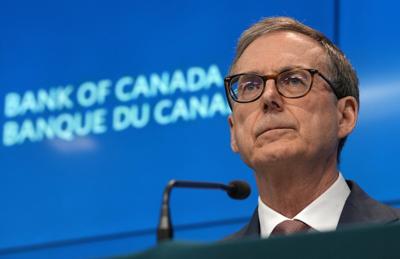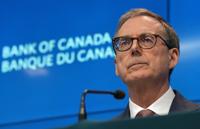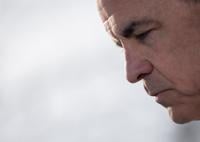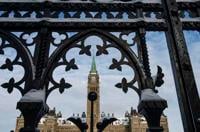OTTAWA - The Bank of Canada will get a fresh look at national inflation figures this week — a picture that's been particularly murky as of late amid tax changes and trade wars.
Statistics Canada is expected to publish its consumer price index for May on Tuesday.Â
Financial data shows the consensus among economists is that inflation ticked up to 1.8 per cent year-over-year last month.
April figures showed the annual inflation rate slowed sharply to 1.7 per cent, thanks largely to a drop in gasoline prices tied to the end of the consumer carbon price.
Benjamin Reitzes, BMO's managing director of şĂÉ«tv rates and macro strategist, said he expects inflation cooled two ticks to 1.5 per cent in May. He pointed to a slowing in shelter inflation and a smaller jump in gas prices compared with the same time last year for the easing.
But it won't be just the headline number the Bank of Canada is parsing as it attempts to set its benchmark interest rate in an increasingly uncertain world.
"The reality is, they don't just look at one number. They look at a number of different inflation metrics to really try and figure out what the underlying trend is," Reitzes said.
Bank of Canada governor Tiff Macklem called the current inflation picture "complicated" in a speech to the St. John's Board of Trade in Newfoundland and Labrador on Wednesday.
The "firmness" in underlying inflation lately might be early signs of the trade war with the United States impacting inflation, he said.
The central bank has so far been dogged by uncertainty tied to the tariff dispute, holding its policy rate steady at 2.75 per cent twice in a row as it waits for clarity on how the trade restrictions will impact inflation.
While the tariffs and counter-tariffs themselves are likely to drive up prices for businesses, it's not yet clear to the bank how quickly companies will pass those costs on to customers.
Resulting slowdowns in the economy could also see businesses and consumers rein in spending, keeping inflationary pressures relatively tame.
Katherine Judge, senior economist at CIBC Capital Markets, said inflation likely inched higher because of tariffs.Â
"The acceleration in the monthly pace will be largely tied to food prices that are picking up counter-tariff impacts and core goods prices that could begin to reflect broader tariffs," she said in a note to clients on Friday.Â
"We expect rent inflation to decelerate after a surprising jump in April, and in line with industry data, leaning against food price increases."
Judge noted the upcoming inflation reading will reflect adjustments Statistics Canada made to its CPI basket, but said such changes don't usually have a meaningful impact on the headline number.Â
Reitzes said it's been hard to pinpoint the impact of tariffs on the inflation data.
"The Bank of Canada is certainly watching for that, though," he said.
"The army of economists they have working for them will be kind of teasing through all of that data and looking for any signs of that."
Food inflation has been a bit stronger in recent months, which Reitzes noted is one area where Canada is applying counter-tariffs. But he also said that could be a lagged impact from weakness in the şĂÉ«tv dollar at the start of the year now filtering into food prices.
Another source of noise in the inflation data is tax changes from the federal government in the early part of the year.
First, Ottawa's two-month GST holiday skewed price data on a range of groceries, gifts and household staples, and now the end of the consumer carbon tax is driving down headline inflation.
But that impact is only going to last for a year and will fall out of the inflation comparison after 12 months.
Macklem said the central bank is increasingly putting weight on CPI measures that strip out influences from tax changes to give it some clarity.
He noted Wednesday that inflation excluding taxes was 2.3 per cent in April — stronger than the central bank was expecting.
Macklem also signalled Wednesday that the Bank of Canada is scrutinizing its own preferred measures of core inflation a little more closely.
Those core inflation figures are now running above three per cent, but Macklem also warned there's "potentially some distortion" that could be "exaggerating" price pressures.
Alternative measures of core inflation are coming in lower, so he said the bank is looking at a range of factors as it gauges where inflation is heading next.
"There is some unusual volatility. So how temporary or persistent this is, I think remains an open question," Macklem said.
The Bank of Canada will get a look at two inflation reports before its next interest rate decision on July 30.
If inflation shows signs of remaining well contained in those releases, Reitzes said the Bank of Canada might find a window to lower interest rates to boost the economy in the face of tariffs.
"They'll probably take that opportunity, but inflation needs to provide them with that," he said. "And at the moment it is not doing so."
This report by şĂÉ«tvwas first published June 22, 2025.







































